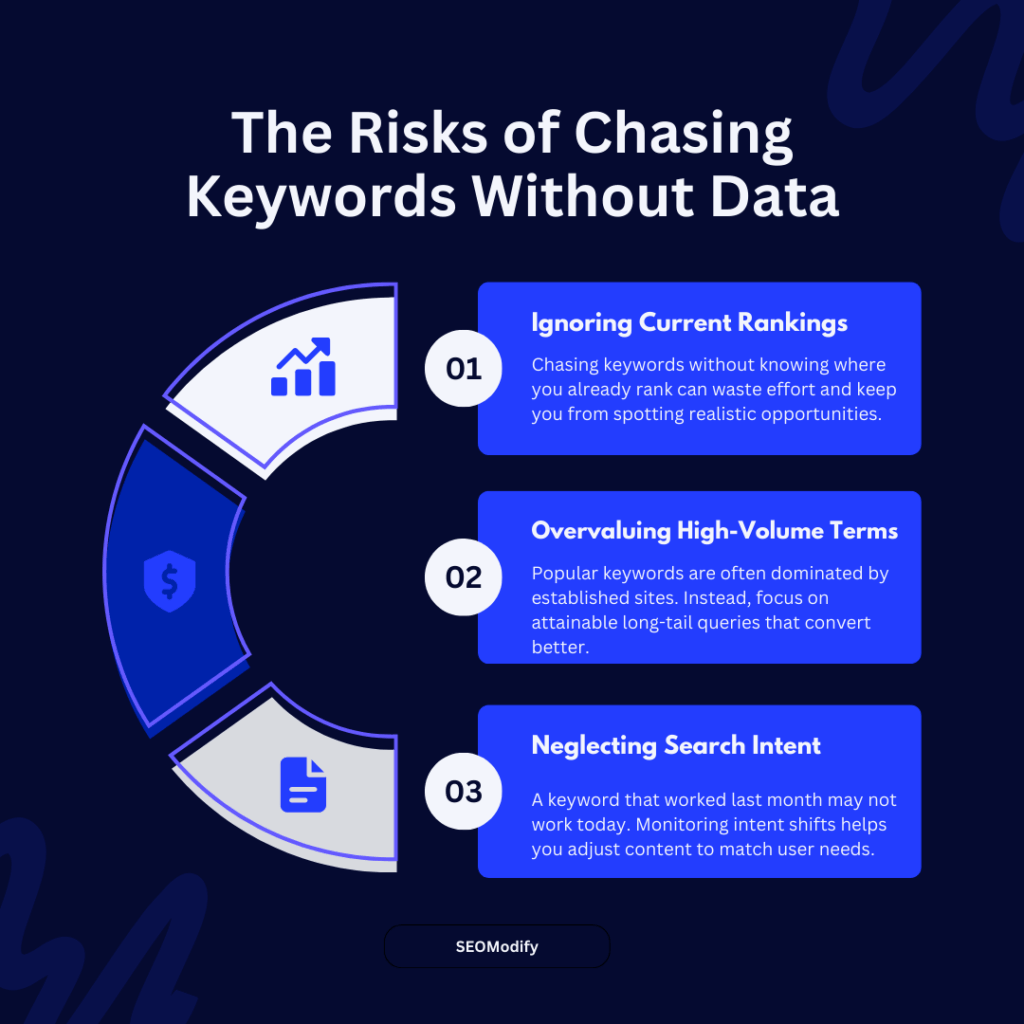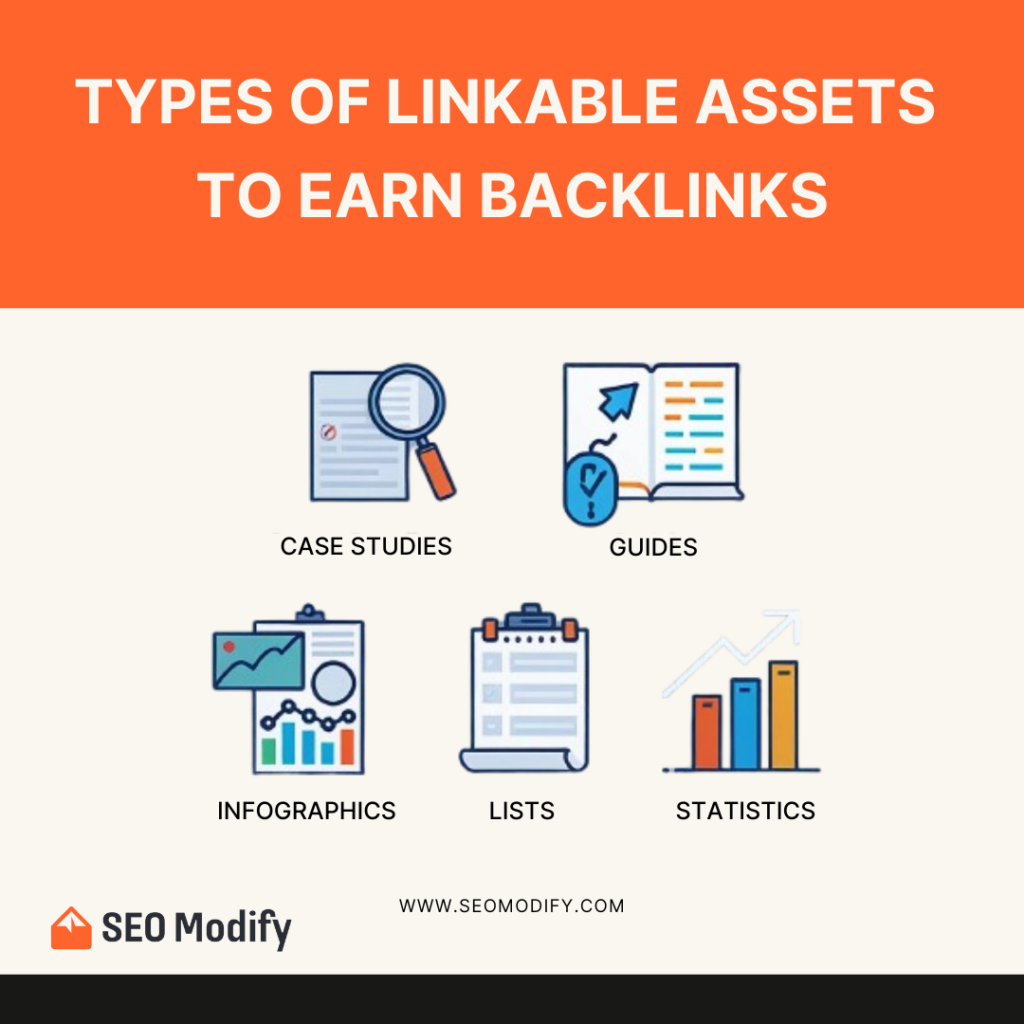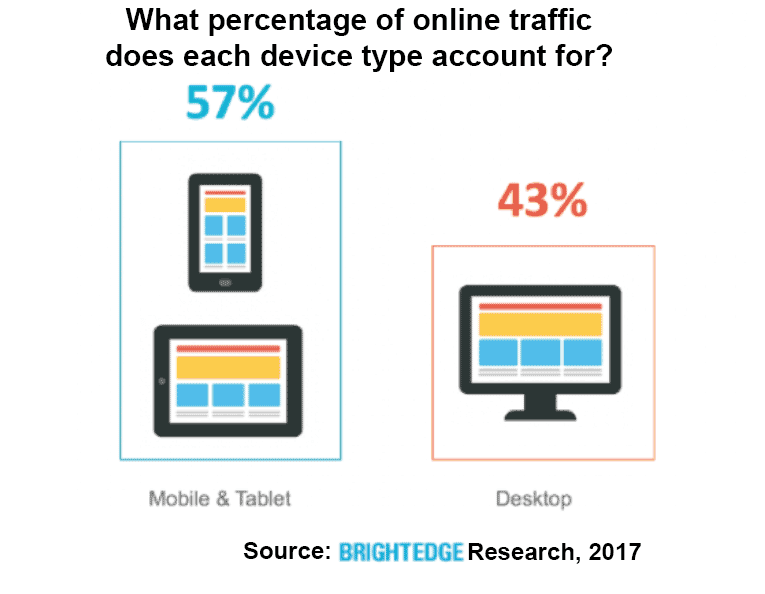SEO often feels unpredictable, particularly when you lack a clear view of where your website ranks.
At SEOModify, we know how many businesses put in a lot of effort—publishing content, building links, tweaking titles—but without seeing how they actually perform in search results, it’s hard to tell what works and what doesn’t.
That’s where SERP tracking comes in.
By monitoring your position on search engine results pages, you gain real data that informs every SEO decision, from keyword selection to content updates.
Let’s break down six common SEO mistakes and how proper SERP tracking helps you avoid them.
Mistake #1 – Targeting Keywords Blindly
A lot of websites chase keywords without knowing where they currently rank.
It may seem that using high-volume keywords is a perfect solution, but when those words are already taken by large, well-established websites, you are putting yourself on the losing side.
SERP monitoring can give you an idea of which words are attainable to rank for and which may be too competitive.
Simultaneously, most marketers target general, high-volume keywords and overlook long-tail queries that are easier to rank for and are more likely to convert. Observing where you are makes you notice these opportunities and puts them at the top of your list.
You also want to know whether you have meaningful traffic generated by your keywords or vanity clicks. Ranking data combined with analytics guarantees that your SEO activities are focused on visitors who are likely to engage or convert.
Lastly, the intent of searches evolves. The reason why a keyword performed well last month does not mean that it will perform well this month. With the help of shifting keywords, you can adjust your content to correspond with the actual interests of users.

Mistake #2 – Missing Sudden Ranking Drops
It is common to see several businesses not realise that their ranking has dropped until the point where their traffic has radically decreased, and this may cost revenue and opportunity.
A two- or three-spot decrease of a high-value page can reduce your click-through rate by half. These shifts can be immediately identified with the help of SERP tracking.
When a drop occurs, it is necessary to know the cause.
Was it an algorithm update, a new piece by a competitor, or a change on your own site? Time checks and alerts can be used to identify the cause in order to act promptly.
Sudden ranking change alerts discourage reactive SEO, i.e., you can resolve problems before they have a major effect on traffic. In their absence, you take more time to respond, and your competitors have time to make inroads.
Mistake #3 – Ignoring Mobile Rankings
Mobile searching has become the leading factor in most industries, yet most websites concentrate on desktop rankings. Mobile SERPs are quite different due to such features as carousels, People Also Ask boxes, and local packs, which tend to push the organic results further down.
Tracking mobile visibility makes sure that you are aware of how your site appears to the devices the users themselves use.
Mobile-first indexing implies that Google considers your mobile site initially, thus when your mobile pages are either slow or unstable, your rankings may decrease, despite your desktop site appearing to be okay.
Keep in mind, it is no longer optional to pay attention to the Core Web Vitals and page speed on mobile. They should be up high in your priority list.
Mistake #4 – Overlooking Local Rankings
Local visibility is what causes customers to walk through the door or even call to make a reservation with the business. The position of keywords can differ significantly across areas, and therefore an average position in a city or country can conceal the true status of your ranking.
Google Business Profile (GBP) listings can typically drive more clicks than organic search results in local searches, yet most businesses do not track them alongside their own SEO positions.
Also keep in mind there is also proximity bias: depending on the proximity of the searcher to your business, the search results vary.
With SERP tracking, you can easily identify the local rivals that keep outperforming you and directs targeted optimizations.
If you still haven’t set up your Google Business Profile, don’t worry. In the below video, Nate walks you through how to set up a Google Business Profile in 2025, step by step.
You can start by creating your Google Business Profile here: https://www.google.com/business
To track your local rankings, follow local keywords, and increase your local visibility at no cost, try our local rank tracker, which offers Google Maps insights and gives you 300 free credits to start—no credit card needed.
Mistake #5 – Assuming Competitors Are the Same Across Keywords
You should not assume that your best competitors are the same across every search term.
While others take over informational queries and some chase commercial-intent keywords, your approach must adapt to keep pace.
It is good to keep a record of competitor changes, such as the creation of a new content hub or a vigorous link-building effort, so that you are not taken by surprise.
New competitors have the capability of outranking you on niche keywords before they become household names, and thus early identification is of paramount importance.
It is also important to remember that the competitive environment never stays the same; new players and strategies can quickly change the landscape.
Mistake #6 – Making SEO Decisions Based on Assumptions
Lastly, a large number of marketers make their decisions based on gut instincts (assumptions) as opposed to facts.
Actual performance metrics should guide:
- Budget allocation
- Content updates
- Link-building priorities and more
And with SERP tracking, it supports each of these decisions by providing measurable outcomes, showing which keywords generate both traffic and conversions.
Tracking ranking variations also ensures the effectiveness of your SEO activities, such as rewriting your titles or launching backlinking campaigns.

Even when your site ranks high, SERP elements, such as featured snippets, maps, and ads, can influence click-through rates. Monitoring these aspects ensures that you are aware of your real visibility.
Finally, it is important to validate data. Don’t assume that increased traffic connotes success. It is only through checking rankings and conversions that you can know whether improvements are sustainable.
Conclusion
These six errors can be easily prevented by using a SERP tracker.
Through tracking search performance, keeping a keen eye on unexpected shifts and knowing your competitors as well as your audience, you will make SEO less a guesswork, more a quantifiable action plan.
Not only does proper tracking help avoid the expensive mistakes, but it will also give an effective roadmap to growth. The more you are visible, the more intelligent you can make your SEO choices and the more valuable results you can bring to your business.
The best part is that you can use our free SERP tracker to effortlessly monitor the search result positions of any site for specific keywords, no matter the location.
Try our Google SERP Rank Checker For Free Today!
